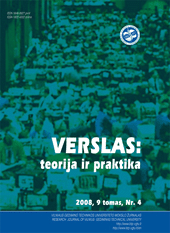Static and Dynamic Quantity-Setting Games: An In-Class Experiment
Static and Dynamic Quantity-Setting Games: An In-Class Experiment
Author(s): DomeNico RaguseoSubject(s): Economy
Published by: Vilnius Gediminas Technical University
Keywords: experimental economics; oligopoly; game theory
Summary/Abstract: This paper illustrates the results of a case study on teaching economics issues employing an experiment where students were made to play quantity-setting games employing the Stackelberg and Cournot theory of oligopoly. A strictly theoretical approach to the study of the oligopolistic market structure is replaced by a discovery-learning method. The goal of the in-class experiment is both to illustrate to students the economics theory through learning by doing approach and to allow the instructors to discover how students act when they have to develop their own strategies, placing them in a role similar to that of firms aiming to maximize the profits. The main finding shows how students converged toward the Nash-equilibrium quantity. Several firms or groups of students, who were producing high output level at the beginning of the game later on reduced their output since they realized that their profit could increase by just producing less. At the end of the experiment, students have emphasized that they have really learned what it is like to interact in a market structure where firms can influence the market variables but not absolutely control them.
Journal: Verslas: teorija ir praktika
- Issue Year: 2009
- Issue No: 4
- Page Range: 308-314
- Page Count: 7
- Language: English

